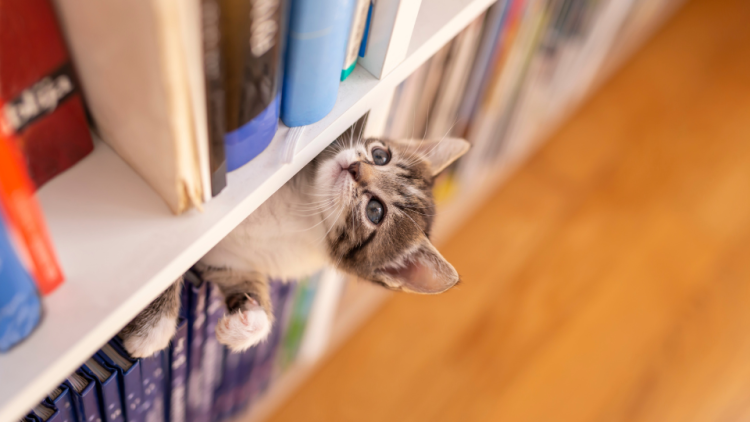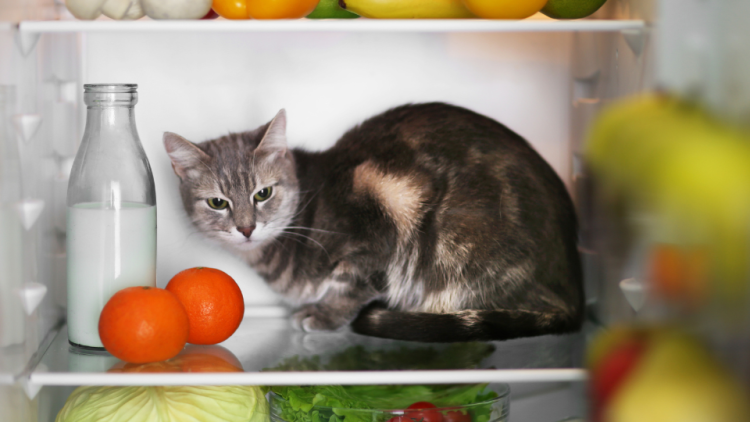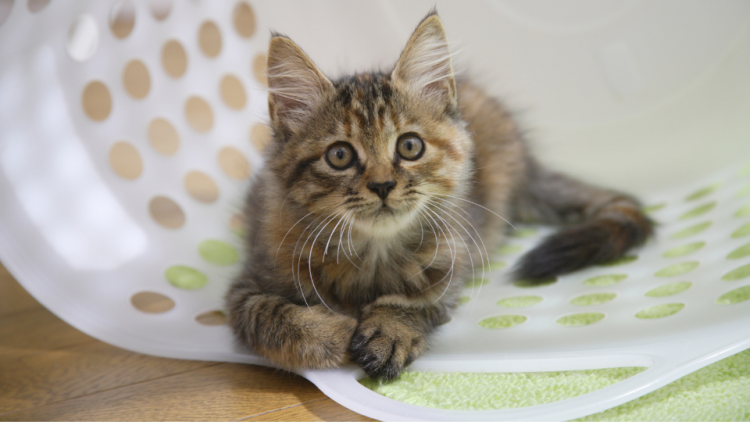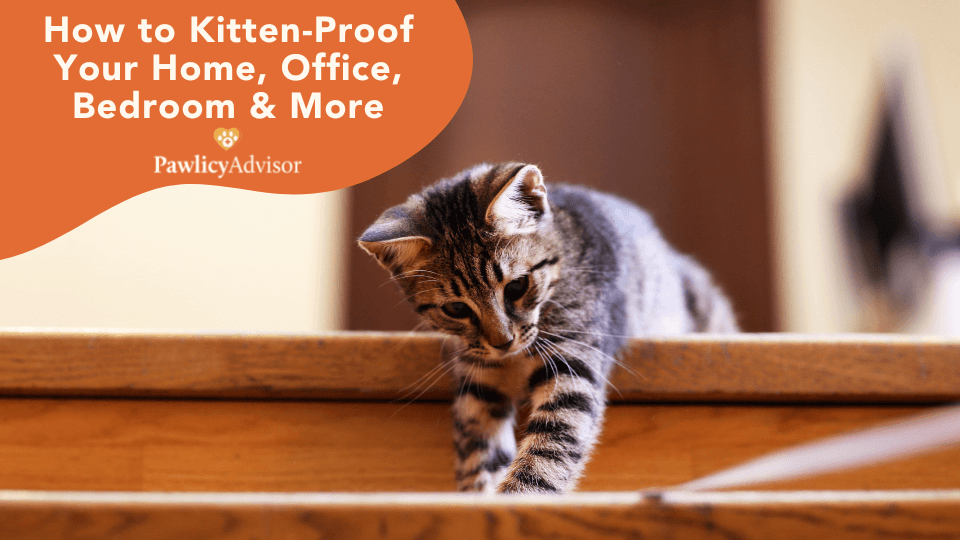Are you thinking of bringing home a kitten? Kitten-proofing your house or apartment is imperative before you introduce your four-legged friend to their new environment.
Kittens are inquisitive and energetic, putting them at a greater risk for accidents. Doing some safeguarding around the house will not only make sure that they don't scratch, chew, or eat anything they aren’t supposed to, but will also help keep them out of harm’s way by preventing dangerous situations within your home.
Protect Your Kitten With Pet Insurance
If you’re uncertain about how to cat-proof your place, use this checklist as a guide in each area of your home to double-check you’ve cleared up all safety hazards. As a new pet parent, it’s your responsibility to protect your precious kitty in their journey to adulthood.
Click the links below to jump to the information you need before bringing a new kitten home. Here’s what we’ll cover:
- Kitten-Proofing Checklist
- How to Kitten-Proof Your Home, Room by Room
- Key Takeaways
- FAQs on Kitten-Proofing
Kitten-Proofing Checklist
Kittens love to hide, climb, and explore, so it’s essential to prepare your house before bringing a new kitten home. Here’s our kitten-proof checklist to help you get ready for your little one’s arrival; use the links to for more information on each safety tip.
Living Room
- Remove poisonous plants
- Secure fragile objects
- Watch out for cords on blinds
Bedroom
- Beware of high surfaces
- Clear your nightstand
- Hide mothballs
Bathroom
- Keep the toilet seat lids down
- Lock toxic substances
- Cover up garbage bins
Kitchen
- Put away dangerous foods
- Close cupboards and pantries
- Keep stove top covered
- Cover up trash cans
Office
- Kitten-proof cables and wires
- Keep office supplies out of reach
- Power down the paper shredder
Stairs
- Invest in a stair gate
- Block the gaps between the banisters
Laundry Room & Garage
- Block off dryer and laundry baskets
- Stash away hazardous items
Yard
- Install gates and fencing
- Remove toxic plants
- Cover water features
- Remove small choking hazards
- Lock away sharp garden tools
How to Kitten-Proof a Living Room
Remove Poisonous Plants
Certain houseplants, such as cyclamen, lilies, and sago palms, are toxic to cats. Ask your veterinarian to provide you with a complete list of dangerous plants and, if possible, remove them from your home before the kitten arrives.
Secure Fragile Objects
Kittens love to investigate and explore, so you will often find them walking along shelves and fireplaces. If you have pictures or fragile ornaments that your cat could knock over and smash, put them away.
Watch Out For Cords
Your kitten can quickly get hurt or strangled by the blind cords and curtain ties on windows. Choose window fixtures without looped cords or cut the loop altogether to prevent such issues.
How to Kitten-Proof a Bedroom

Beware of High Surfaces
Kittens love to climb, but they haven’t quite mastered the art of landing on their feet. Their curiosity for heights can cause them to fall and fracture a bone — one of the most common injuries in young indoor cats.
Not only are broken bones extremely painful for your kitty, but they could also impact their growth development. Preventing these accidents is crucial, so take down those tempting shelves and high surfaces they might be inclined to jump on or climb up.
It’s best to not allow your kitten upstairs initially. If this isn’t doable, keep all windows closed and restrict access to balconies.
Clear Your Nightstands
Keep hazardous objects such as rubber bands, medications, thread, and needles off nightstands. You’ll probably need to get used to keeping your nightstands clear even when your kitten grows up, as many cats like sitting on them and pushing things off.
Hide Mothballs
Mothballs contain naphthalene which is dangerous to cats. A little lick or sniff is enough to cause mild symptoms like vomiting, nausea, and respiratory irritation, but ingestion might result in severe poisoning.
How to Kitten-Proof a Bathroom
Keep the Toilet Seat Lids Down
Keeping the lids down is the best way to prevent your little feline friend from falling into the toilet. You should also avoid leaving toilet bowl cleaners sitting in the bowl and avoid using automatic toilet bowl cleaners or cakes, as these chemicals are toxic to cats who might consume or play with the running water.
Store Dangerous Substances
Stash prescription drugs and over-the-counter medications, supplements, cleaning products, and other toxic substances away from your kitten’s reach. This includes veterinary products, as well. For instance, some dog flea treatments are harmful to cats, or your kitten could accidentally overdose on a supplement product, even if it’s safe when taken as prescribed.
Cover up the Bins
A curious kitten could easily get their paws on items like dental floss or clothing tags in your garbage bin. If they do, they might get tangled, choke, or swallow the foriegn object, which can act like a saw blade in their intestine, causing a severe digestive obstruction and immediate medical emergency.
How to Kitten-Proof a Kitchen

Stow Away Dangerous Foods
Did you know that some human foods are dangerous to cats? The articles of food cats can’t eat include garlic, onions, grapes, raisins, cow’s milk, chocolate, raw meat, and raw eggs. It’s best to keep your food out of your pet's reach and ensure that all family members know to offer the kitten specifically labeled food.
Shut Cabinet Doors
In addition to storing all human and pet foods securely behind closed pantry or refrigerator doors, remember to always close the cabinets and cupboards any time you access their contents — especially if you’re using chemicals and cleaners.
Kittens are known to be mischievous, so you might consider placing child-proof locks on any cabinet that’s within their reach so they can’t open the door and explore when you’re not looking.
Cover Stove Tops
Another common injury in kittens occurs when they jump onto the kitchen counter and accidentally burn themselves, not realizing the stove was either in use or recently turned off. Find suitable stove top covers to prevent your kitten from getting seriously injured. It’s a good idea to warn them against going near open flames, like a gas ring or fire, as their fur could catch on fire.
Conceal Closed Trash Cans
Similar to how you kitten-proof a bathroom, the trash, compost, and recycling bins in the kitchen should also be closed at all times. Kittens can get sick from compost, suffocate in food bags, or suffer from accidental poisoning if they get their paws on what you throw away.
How to Kitten-Proof an Office
Cat-Proof Wires
Kittens like to play with things that look like string and yarn, including electrical wires. If they do, they can get tangled, experience an intestinal blockage, or, worse yet, suffer an electric shock. Several ways to cat-proof wires include:
- Covering them with tubing from hardware stores
- Installing cable protectors
- Wrapping up loose ends
- Placing them in hard-to-reach spots
Keep Office Supplies Out of Reach
Keep all office, art, and crafts supplies out of your kitten’s reach. Try to keep them away from all of these flashy objects that they’ll surely want to play with, but risk hurting themself in the process. Pay special attention to sharp objects like staples and tacks, as well as bouncy rubber band balls. Kittens love to play with them, but are known to strangle paws with the bands or accidentally swallow and choke on it.
Power Down Your Paper Shredder
Paper shredders are a big hazard for kittens. Cats commonly walk across the top of the machines, accidentally turning them on in the process, and getting their feet or fur caught in the shredder as a result.
If you have one in your office, be sure to always power it off after use and preferably leave it unplugged until you need to use it again. The best area to keep them is under a desk where your feline friend is less likely to walk or lie.
How to Kitten-Proof Stairs
If your kitten falls through the banisters, they might end up with nasty injuries. Invest in a stair gate that your pet can't climb through or up and over, or use a thick cardboard sheet to block the gaps between the banisters.
How to Kitten-Proof the Laundry Room & Garage

Block off Dryers and Laundry Baskets
When thinking of making a kitten-friendly home, don’t forget to kitten-proof your laundry room and garage as well. Kittens like to hide in places like dryers and laundry baskets, so be sure to block these off.
Secure Hazardous Substances
The garage is full of hazardous items that you’ll need to stash away such as antifreeze, gasoline, motor oils, and windshield fluid. According to Pets Best, cats are often attracted to antifreeze because of its sweet taste.
Put away any hazardous holiday decorations for cats such as Christmas lights, tinsel, candles, holly and mistletoe, small, sharp, and/or glass ornaments, gift string and wrap, etc.
How to Kitten-Proof a Yard
Now you know how to kitten-proof a house, but what about your backyard? Although your indoor cat won’t go outside immediately, it’s a good idea to make your yard safe and ready. Some of the important things to consider include:
- Installing gates and fencing
- Removing any toxic plants
- Keeping water features covered
- Checking for small objects that your kitten could swallow or choke on
- Locking away sharp gardening tools
Key Takeaways
- Kitten-proofing your home is a simple but effective way to keep your new pet safe and happy.
- Follow the tips above and watch your kitten’s activities to help highlight any other possible causes of illness or injury.
- Despite your best efforts accidents might still happen. That’s what makes pet insurance a smart investment. Having cat insurance means that if an unexpected accident occurs and your kitten needs treatment, most of the financial burden will be lifted and you can focus on getting the best care. Use Pawlicy Advisor to compare plans by the top US providers and choose the one that best fits your pet’s needs.
FAQs on Kitten-Proofing
Where should a kitten sleep the first night?
To make sure your kitten is comfortable in the new home, you’ll need to set up a cozy space where they will feel safe and secure. A secure and comfortable room like the laundry is a perfect choice, or you might want to use a crate or a pen so that you can control your pet’s movements during the night.
How do you train a kitten to stay off the counter?
One of the best ways to keep your kitten off your counters is to give them another outlet for their normal jumping and climbing behavior. You can also apply sticky tape to the counter’s edge (which cats hate), use clicker training, or remove any food, crumbs, or other treats that your pet might be drawn to.
How do you train a cat to not scratch furniture?
Consider purchasing a cat scratching post and some interactive cat toys to provide your cat with a scratching surface. Place the cat scratching post in a place that your pet already likes to hang out.
Alternatively, you can make the furniture item your kitten likes to scratch unattractive by tucking a sheet around the scratched area tightly so your cat can't get under it to scratch, using double-sided tape or aluminum foil, or spraying with a citrus-scented spray. There are also cat nail covers to protect the furniture from scratching.
When can a kitten roam the house?
There’s no fixed age as to when young cats should be allowed to roam the house on their own. Ideally, this should happen once your pet has already been fully accustomed to their surroundings and after you’ve completed the kitty-proofing checklist.
